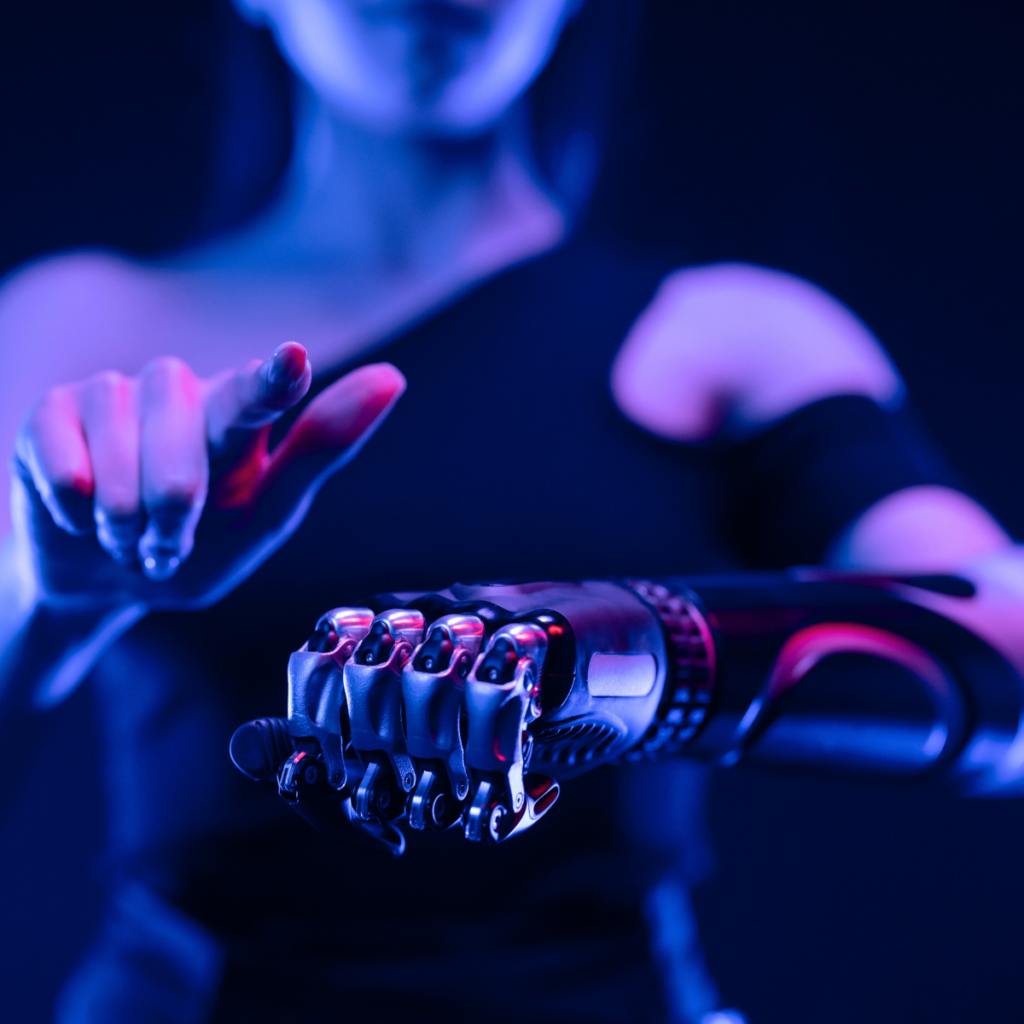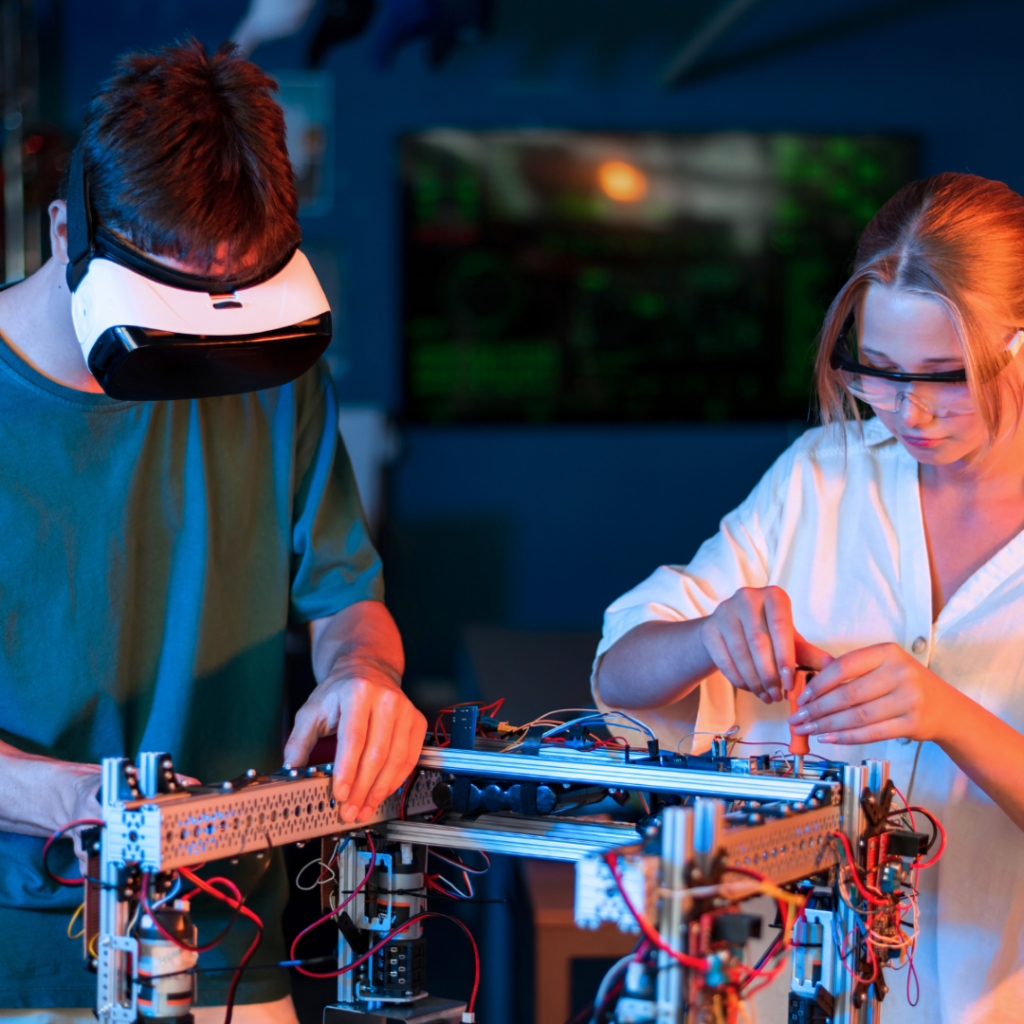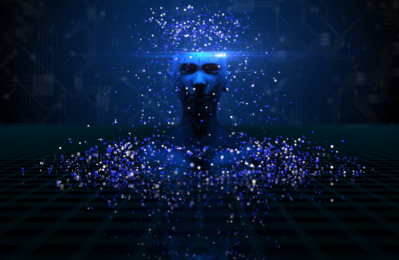With technological advances, the lines between human and machine intelligence will blur even more this year. We’ll show you the fascinating changes brought by neuromorphic computing, agentic AI, micro LLMs, and other IT trends.
1. Agentic AI
Agentic AI (artificial intelligence) builds on generative AI in the form of autonomous machine ‘agents’ that can perform business-related tasks without human intervention. Examples of the use of agentic AI include self-driving cars, robotic process automation, video creation and virtual assistants. Agentic AI will lead to a 40-50% acceleration in technological modernisation, which is excellent news. After all, up to 70% of the software used by Fortune 500 companies was developed 20 or more years ago. However, it can be challenging for companies to provide AI agents with the data needed for performing their desired tasks, as data is typically scattered across multiple sources and processes. Although the infrastructure for AI agents will be built this year, they will not yet gain full autonomy.
2. Quantum Computing
The speed that fully developed quantum computers would possess has never been seen by any of us in modern machines. A problem that would take the fastest computers today 10 septillion years to solve can reportedly be solved by Willow, Alphabet’s 105-qubit quantum processor, in five minutes. The potential of quantum computing is being explored by organisations in the financial services, pharmaceutical industry and life sciences, as well as in the government sector. It is estimated that this sector will be worth USD 1.3 trillion by 2035. There is also growing discussion of a ‘post-quantum’ era in which quantum computers will easily break current encryption methods. As a result, companies will be looking for recommendations on how to deploy quantum-resistant algorithms.
3. Ambient Invisible Intelligence
Ambient invisible intelligence will bring seamless integration of advanced AI technologies and computing into our environment. It represents a shift from explicit interaction with technology, such as using a smartphone or computer, to implicit and intuitive engagement. Ambient invisible intelligence is meant to improve our lives without its active input or even visible presence. The technology thus becomes a silent assistant that automatically responds to our needs. However, providers will need to address personal data protection issues and obtain consent for certain uses of the data.

4. Hybrid Computing Systems
Hybrid computing systems optimise the execution of complex tasks. They achieve this by distributing the workload across different computing, storage and networking mechanisms (e.g., traditional/networking, cloud, quantum or neuromorphic types of computing systems). Consequently, hybrid computing systems will create a highly efficient, transformational and high-speed environment. However, their sheer complexity can become their drawback, as poor model design or inefficient task allocation can cause delays or service failures.
5. Spatial Computing
This is a symbiosis of humans and advanced computing systems (VR, AR, AI and IoT). Spatial computing digitally enhances the physical world and responds to consumer demand for interactive experiences in gaming, education and e-commerce. Examples of spatial computing are sensors and cameras with AI technologies, AI and machine learning systems, video mapping or human-computer interaction systems. Apple released Vision Pro glasses, its first device in the spatial computing segment, in February 2024. Ivan Shkvarun, CEO of investigative firm Social Links, expects other companies to launch competing devices this year. Gartner even predicts that the value of spatial computing will grow to $1.7 trillion by 2033.
6. Neurological Enhancement
These technologies decode brain activity and can improve cognitive abilities such as memory, attention, learning and problem solving. According to Gartner, such ‘enhancement’ could become a future job requirement. In medicine, neurological enhancement offers the potential for fast recovery from stroke, spinal cord injury and hearing loss. In addition, it will change marketing, the way skills are acquired and job interviews – allowing HR to ‘read’ the brain of the candidate. Neuro-technological devices could also detect criminal history, neurological anomalies or low mental capacity. However, such advances also carry risks of invasion of privacy or manipulation of consumers.
7. Neuromorphic Computing
Neuromorphic computing is an innovative approach that mimics the human brain’s architecture and functionality. While traditional computer architectures process information sequentially and are often constrained by energy and speed limits, neuromorphic systems are designed to process information in parallel, similar to neural networks in the brain. By using an architecture where chips function as neurons, they harness the brain’s strengths and enable quantum leaps in performance.

8. Synthetic Media
The content of synthetic media platforms is entirely created using artificial intelligence. For example, based on editorial journalists’ description, three virtual hosts of the radio station OFF Radio Krakow were programmed last year. Emi, Kuba and Alex were supposed to attract young and active listeners, but in fact, they elicited mixed reactions, and after a week, the experiment was terminated. Some analysts believe that this was just a trial run, and this year, we will hear again about new synthetic media that will create and distribute AI content.
9. Extended Reality
‘I believe that by 2025, extended reality (XR) will have a major impact on education, training, retail and entertainment,’ says Ivan Shkvarun. While virtual reality will help students immerse themselves in historical events, augmented reality will allow technicians to perform complex repairs with digital overlays in real time. According to Ivan Shkvarun, XR will be most in demand in areas where the cost of human errors is too high. By blurring the lines between the physical and digital world, it will create more engaging and efficient solutions.
10. Micro LLMs
Micro LLMs (large language models) represent a new direction in natural language processing. The goal is to create compact and efficient versions of large language models without significantly limiting their capabilities. Micro LLMs are tailored for environments with limited computational resources, storage or power consumption, such as mobile devices or real-time applications. They can also make it significantly easier for medium and small businesses to access the capabilities of highly developed generative AI.

Titans that have
joined us

Clients that have
joined us

Succcessfully supplied
man-days






